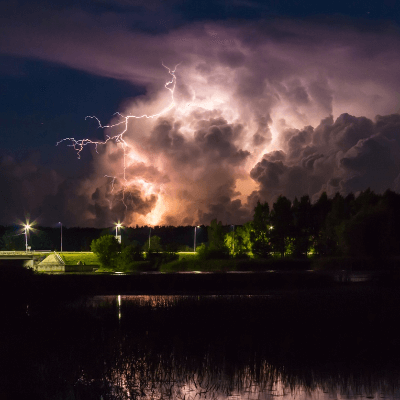
This web page contains thunderstorm facts for kids and is an excellent resource for anyone researching thunderstorms. Our goal is to provide you with the latest and most accurate thunderstorm facts from scientific sources. In addition to thunderstorm facts, you’ll find thunderstorm pictures and additional resources for researching thunderstorms.
The thunderstorm facts listed below will help you learn what a thunderstorm is, what the different stages of a thunderstorm are, what dangerous weather events thunderstorms can create and other thunderstorm facts. We hope these facts about thunderstorms are helpful and help you learn more about this powerful meteorological event.
If any of the below thunderstorm facts are inaccurate, please contact us and let us know.
17 Thunderstorm Facts for Kids
- A thunderstorm is a storm that occurs in cumulonimbus clouds and produces lightning and thunder.
- There are four types of thunderstorms, air-mass thunderstorms (single cell), Multicellular thunderstorm (multi-cell cluster), squall line (multi-cell line) and a rotating thunderstorm (supercell).
- Strong thunderstorms (supercells) can produce strong winds, heavy rain, flooding, hail and tornadoes.
- Weak thunderstorms are sometimes referred to as thundershowers.
- The average thunderstorm has a diameter of 15 miles (24 kilometers).
- The average thunderstorm reaches an altitude of 40,000 to 60,000 feet (12,192 to 18,288 meters), strong thunderstorms can reach as high as 75,000 feet (22,860 meters).
- The average thunderstorm lifts 13.2 million gallons (500 million kilograms) of water vapor into the Earth’s atmosphere, and releases more energy than the atomic bomb dropped on Hiroshima, Japan in 1945.
- Thunderstorms go through three stages in their lifecycle, developing stage, mature stage and dissipation stage.
- Thunderstorms need three ingredients to form, moisture, a lift mechanism and unstable rising air.
- A thunderstorm can occur at any time throughout the year. However, thunderstorms are more likely to develop in the spring and summer months.
- A thundersnow or winter thunderstorm produces snow instead of rain as precipitation, but will still produce thunder and lightning.
- There are an estimated 16 million thunderstorms across the globe every year.
- At any given moment there is an average of 2,000 active thunderstorms across our planet.
- Satellites and weather radar, also known as Doppler Radar, along with trained storm spotters, are used to detect and issue thunderstorm watches and warnings.
- A severe thunderstorm watch is issued by the National Weather Service when weather conditions are present to develop a severe thunderstorm.
- A severe thunderstorm warning is issued by the National Weather Service when weather radar detects a thunderstorm is or is going to produce dangerous weather conditions.
- Thunderstorms don’t just occur on Earth’s, they’ve been observed on Jupiter, Neptune, Saturn and Venus.
Thunderstorm Pictures
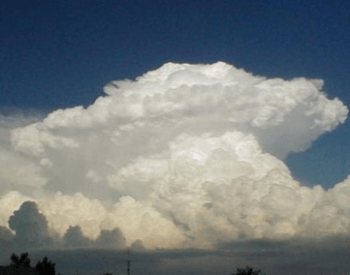
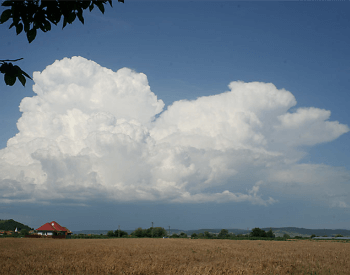
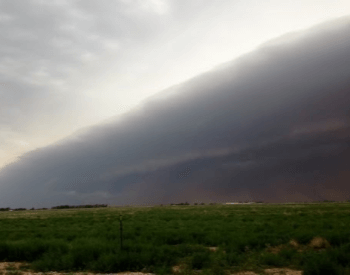
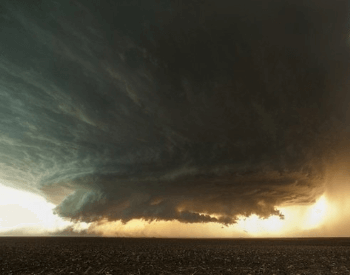
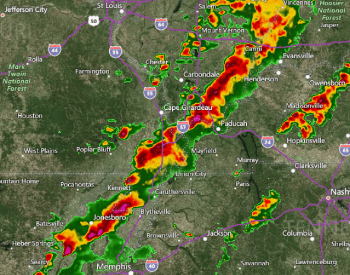
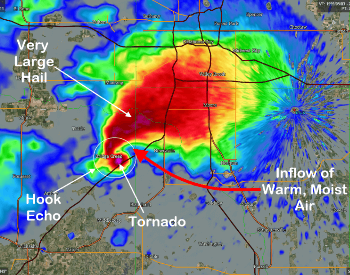
Additional Resources for Thunderstorm Research
- Severe Weather 101: Thunderstorm Basics – Basic thunderstorms facts for kids from the National Severe Storms Laboratory.
- Storm Prediction Center – View real-time storm predictions and past storms at the NOAA / NWS Storm Prediction Center.
- How Thunderstorm Form – Learn how a thunderstorm forms at UCAR, the Center for Science and Education.
- Life Cycle of a Thunderstorm – Learn about the life cycle of a thunderstorm at the North Carolina Climate Office.
